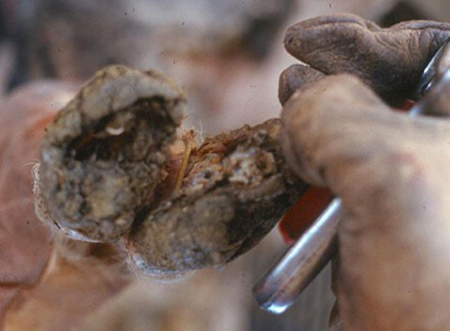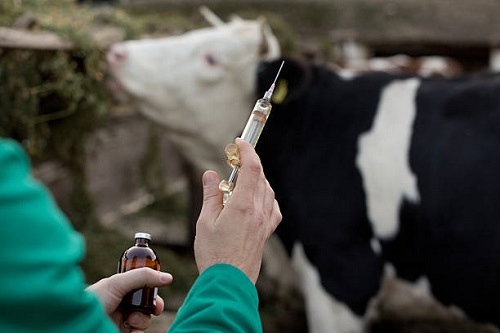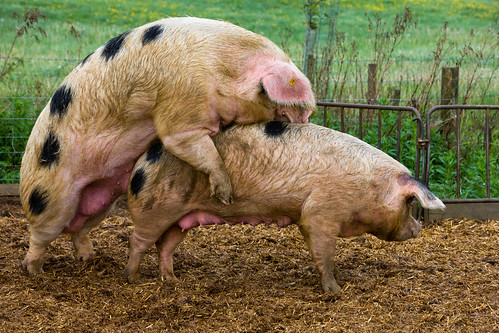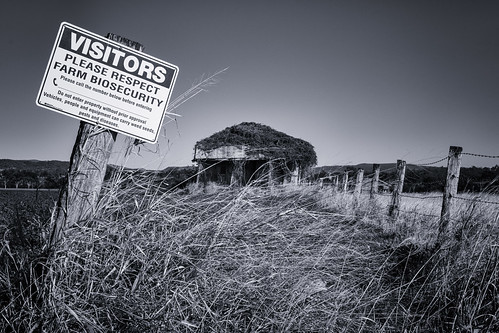Hoof Rot or Foot Rot is a common disease in goats that can cause severe lameness and even death if left untreated. The condition is caused by a bacterial infection that attacks the goat’s hooves, causing them to soften and break down. Hoof rot is a serious problem in goats and can spread quickly through a herd, so it’s important to be aware of the signs and symptoms and know how to prevent and treat the condition.
In this article, we will discuss the causes, signs and treatment of hoof rot in goats. We will also provide some tips on how to prevent the disease from spreading in your herd.
What is Hoof Rot?
Hoof rot or foot rot is a contagious disease that affects hooved animals which include horses, goats, sheep, cattle and donkeys. This disease is characterized by a black, necrotic fleshy space between the two toes and a strong foul odor. The affected animal becomes lame as a result of the injury to the foot.
Causes and Signs of Hoof Rot
Hoof rot is caused primarily by the anaerobic bacterium Dichelobacter nodosus. These anaerobic bacteria are present in the soil. When they find their way into the moist, fleshy interdigital space between the toes, they continue to thrive and multiply there. They synthesize an enzyme that breaks down and kills the cells of the fleshy interdigital space. Parts of the hoof walls are also affected and eaten by these bacteria. The area later becomes black and necrotic and smells bad due to the decay taking place there.
The animal suffering from hoof rot (or foot rot) always feels pain in the area and finds it hard to use the affected limbs. In other words, the animal will become lame as the disease persists.
Also Read: 5 Common Diseases of Goats
How to Treat Hoof Rot in Goats
The treatment of hoof rot is easy and can be done without the intervention of a veterinarian if detected early. Before going ahead to treat hoof rot, you must have the following equipment.
- Hoof shears or trimmers
- Zinc sulfate, copper sulfate, Kopertox or Dr. Naylor’s Hoof and Heel
- Small container for foot dipping
- Damp cloth
Follow the steps below to treat hoof rot in goats.
- Sterilize the hoof shears and knife over a hot flame.
- Remove debris, manure, dirt or stones around the toes and interdigital spaces using a knife or hoof pick.
- Properly trim off the excess or overgrowing hoof of the affected foot. Do this carefully and avoid cutting too deeply.
- Use a damp cloth to clean the toes and wound area carefully. This is important to further clean the area from debris.
- Mix the footbath solution (zinc sulfate or copper sulfate) in a small container by following the mixing instructions written on the label. Dip the foot in the container and soak or drench for 15-30 minutes. If you’re using Kopertox or Dr. Naylor’s Hoof and Heel, apply the Kopertox or Dr. Naylor’s Hoof and Heel on the affected foot. Ensure that the whole foot is completely drenched with the medication. Note: Don’t use copper sulfate solution in sheep.
- Keep the foot in an upside-down position for 60-120 seconds to ensure the medication penetrates the wound or infected tissue. Don’t dab or dry it.
- For chronic hoof rot, follow steps 1-6 above and treat the foot rot with injectable antibiotics such as erythromycin, streptomycin, oxytetracycline and penicillin. If the infected tissue or foot does not dry up after the antibiotic treatment, it is best advised to cull the infected goat or animal. However, the withdrawal periods for the antibiotics should be followed before slaughtering the animal for meat.
- Release the foot and keep the goat in a shed with a dry floor. Keep applying the footbath solutions or medication twice daily on the foot until the wound or infected tissue is dry.
Note: Don’t graze the treated animals on pastures that are not free of infected animals for the next 14 days. Avoid keeping the goats in a dirty, muddy or wet environment to avoid reinfection or disease transmission.
Also Read: A Beginner’s Guide to Goat Farming
How to Prevent Hoof Rot
To prevent hoof rot in your herd, the following should be adhered to:
- Construct a foot bath for your animals at the entrance of the barn or house as well as the entrance of the pasture. Ensure their feet are submerged in the foot bath solution whenever they pass through it. The footbath solution should be replaced with a fresh solution when dirty or weak. Prevent your animals from moving on dirty, wet or muddy floors and pastures whenever possible.
- Regularly trim excess or overgrown hooves, toes or sole. Doing this regularly will help prevent the occurrence of foot rot and scald. You should also provide rock or stone piles or abrasive surfaces around the playing area to help the goats partially remove overgrown hoofs.
- Avoid buying goats from herds that suffer hoof rot. Before buying a goat, carefully check the feet and hooves for lesions or wounds. After buying a healthy goat free from foot rot, run the animal through a foot bath on your farm and quarantine it for at least 14 days. The hooves should be rechecked after 14 days before allowing the goat to move with other goats.
- Any infected goat should be allowed to heal completely before being allowed to have access to other goats or pastures.
- Vaccinate your herd against foot rot disease so as to build immunity against it.



